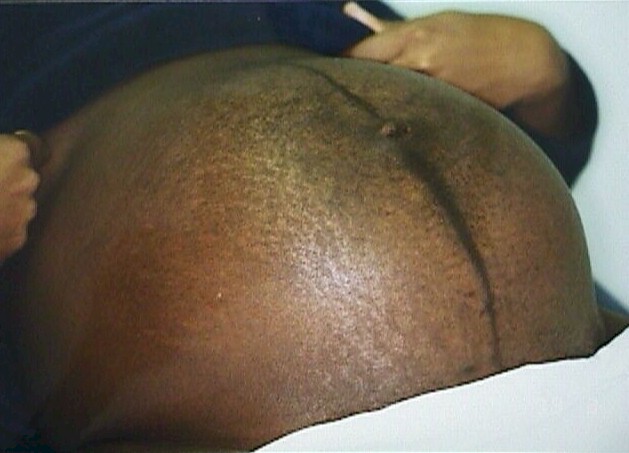|
Skin Changes During Pregnancy |
Over time, there is a darkening of the maternal skin, in predictable ways.
- Chloasma is a darkening of the facial skin, after the 16th week of pregnancy, particularly in women with darker complexions and significant exposure to the sun.. After delivery, the skin clears, but for some individuals, a persistent darkening of the skin remains.
- Spider telangiectasias are small, bright red, star-shaped skin discolorations that blanch with direct compression and then return as soon as the compression is released. After delivery, they will largely resolve, but some may remain.
- Stretch marks occur primarily in late pregnancy and are due to a separation of the underlying collagen tissue. They are dark red. After delivery, they will gradually lighten, ultimately healing as fine, faint, silvery-gray lines. Who gets them and how severe they are is dependent on the genetic predisposition of the mother and the degree of mechanical stress placed on the skin. There are no scientifically-established methods to either prevent them or treat them. However, generations of women have applied cocoa butter to the skin in the belief that it is helpful.
- A "linea nigra" is a dark line running from the pubic bone up the center of the abdomen to the ribs. This appears late in pregnancy and is due to a combination of increasing concentration of melanocytes (skin cells capable of darkening) in that area, plus the high levels of melanocyte stimulating hormone produced by the placenta.

